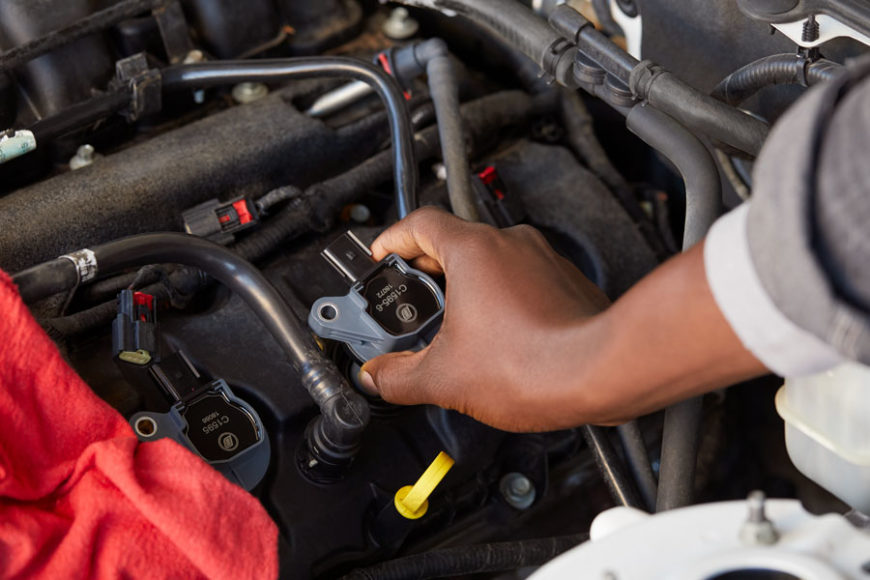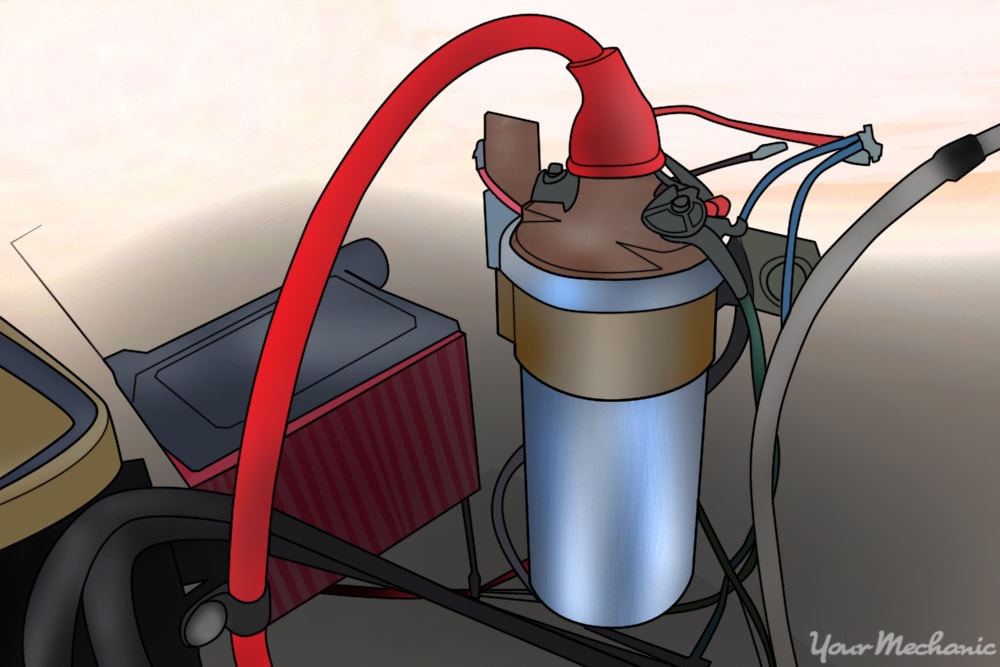
This step involves connecting the positive terminal of your ignition coil to your digital multimeter and then to the high output terminal which runs to the spark plug. Some older mechanics tend to use the method that involves disconnecting the spark plug wire and holding it against a metal chassis while cracking the engine.

While youre here its a good idea to inspect the spark plugs for damage.
Test a ignition coil. Youll want to start by checking for signs of bad ignition coils and then follow up that diagnosis by testing the coils with a multimeter. Ignition coils take energy from the battery usually 12 volts and convert it to a high enough voltage 50000 volts or more to create a spark. Performing an Ignition Coil Resistance Test Bench Test 1.
Remove the ignition coil from the vehicle. The test above isnt the only way to determine whether the ignition coil. Find the resistance specifications for your ignition coil.
Every vehicles ignition coil has its own unique. Testing the ignition coil and the spark plug Connect the tester between the spark plug boot and the spark plug. Then start the engine and watch the tester.
Most people think you can check a small engines ignition system by removing the spark plug and grounding it while cranking the engine and watching for a spark. Heres How To Diagnose and Test An Ignition Coil Park your car on an even surface turn your car off and allow it to cool down. Use your OBD II scanner tool to determine the cylinder with the issue.
Remove the ignition coil. While youre here its a good idea to inspect the spark plugs for damage. You can also test an ignition coil with a spark tester.
The tool is installed inline with the ignition coil to determine if the coil is producing a spark. If all of the ignition coils arent delivering spark the issue is likely with the control side primary side of the ignition system rather than a single ignition coil. An absence of spark from just ONE ignition coil points to a bad coil.
There are two kinds of test available to test your ignition coil and they are spark plug test and bench test. You can choose to do one of these tests or both just depends on your preferences. But before you do any test it is important to take certain precautions.
This video describes a simple and easy one man procedure to test if your coil is firing properly. To test the ignition coil connect the ohmmeters two test leads to the coils primary terminals and -. Most coils should read between 04 and 2 ohms.
Zero resistance would indicate a shorted coil while a high resistance reading would indicate an open coil. An ignition coil is a vital component of todays modern engine management system. Virtually all vehicles manufactured today use ignition coils to provide the spark for the engines spark plugsAn ignition coil is an inductive coil that is a part of the vehicles secondary ignition system.
There are a number of ways to test your cars ignition coil without removing it but the most definitive test is one that removes the coil and tests it with a multimeter. As one of the most important components in the ignition process you want to know for sure if the problems you have starting your car are due to the coil or to something else. This Video explains a couple Different ways to test Ignition CoilsThe Ohms Resistance Test sometimes can be frustrating specially because there are times t.
While ignition coils are generally very sturdy and reliable over time due to heat vibrations and faulty insulation they can become damaged. There are two ways to test the ignition coil of your vehicle. The spark plug test and the bench test.
While the spark plug test is effective the bench test is more thorough. Watch the coil tester when cranking the equipment. If a light flashes inside the tool there is sufficient spark in the sparkplug indicating that the ignition coil is working properly.
If the light does not flash inside the tool the ignition coil needs replacing. Before using this ignition spark tester make sure to turn the engine off and disconnect the ignition coil from the spark plug. Carefully connect one end of the spark tester to the top of the spark plug and connect the other end to the coil output.
Once the spark tester is connected properly start the engine. Testing the coil is the first step in troubleshooting the system and will tell you without question if the coil is functioning as it was designed. The procedure is the same no matter what type of car you drive–the only difference is the location and type of coil you have to work with.
Involves testing your secondary circuit of the ignition coil. This step involves connecting the positive terminal of your ignition coil to your digital multimeter and then to the high output terminal which runs to the spark plug. The majority of the ignition coils usually have a secondary resistance of about 6000 to 10000 ohms.
There are many ways of testing the ignition coil of a leaf blower. Some older mechanics tend to use the method that involves disconnecting the spark plug wire and holding it against a metal chassis while cracking the engine. If there is a spark then the ignition coil is not the problem.
Testing the resistance across several terminals on your ignition coil is the only safe and accurate way to tell if the coils is damaged or not. Measuring the primary and secondary resistance requires an ohmmeter and a digital readout is best if you have access to one.